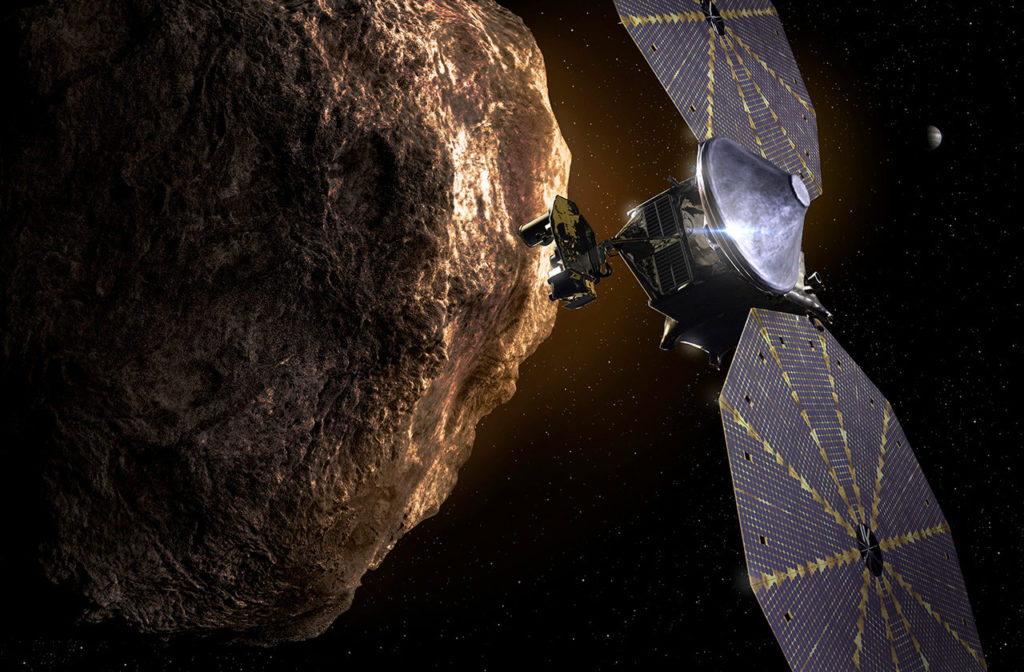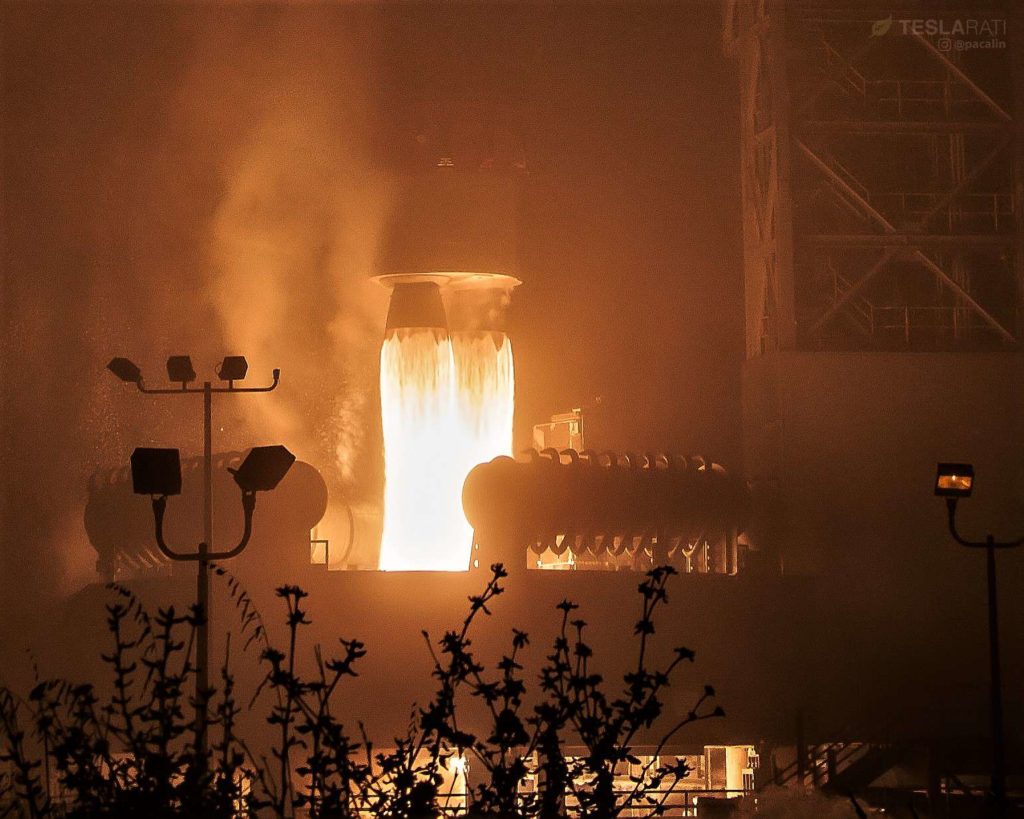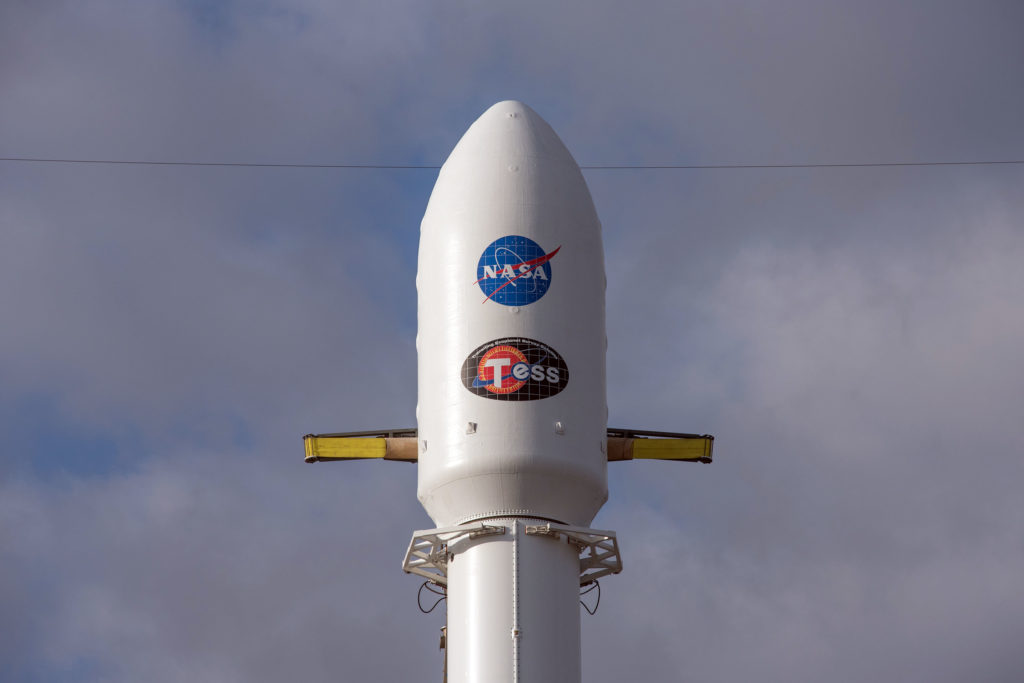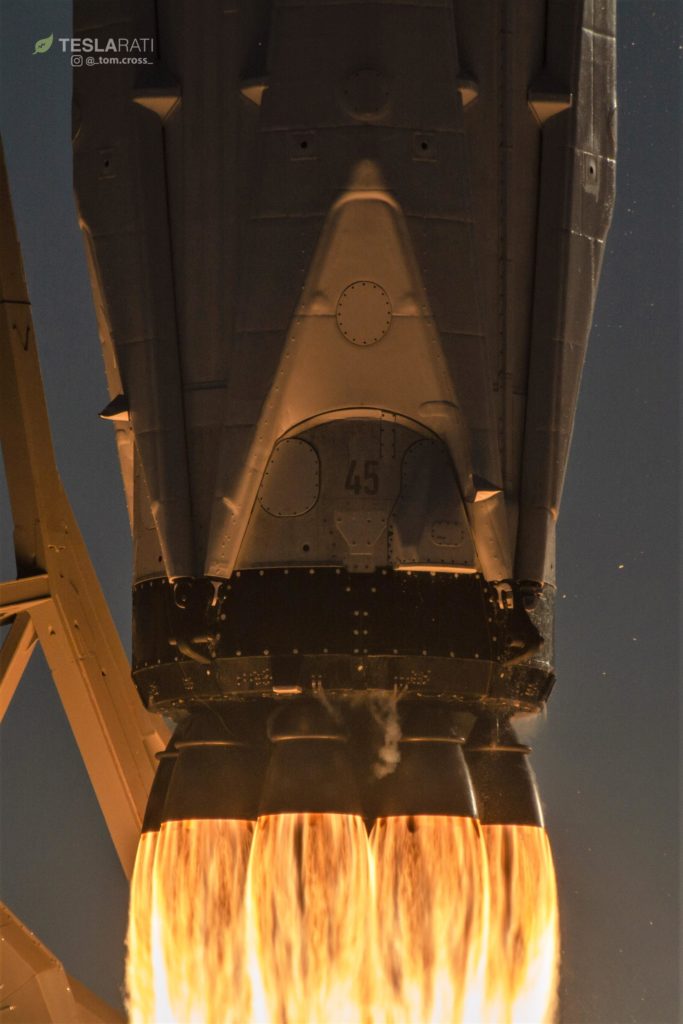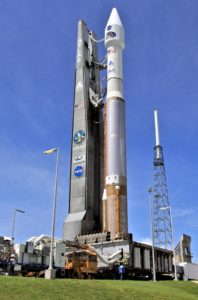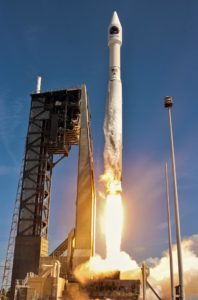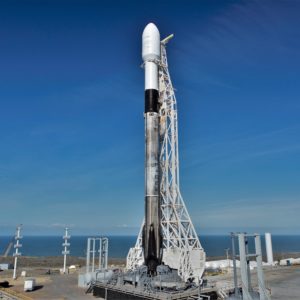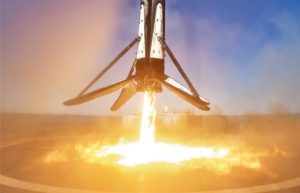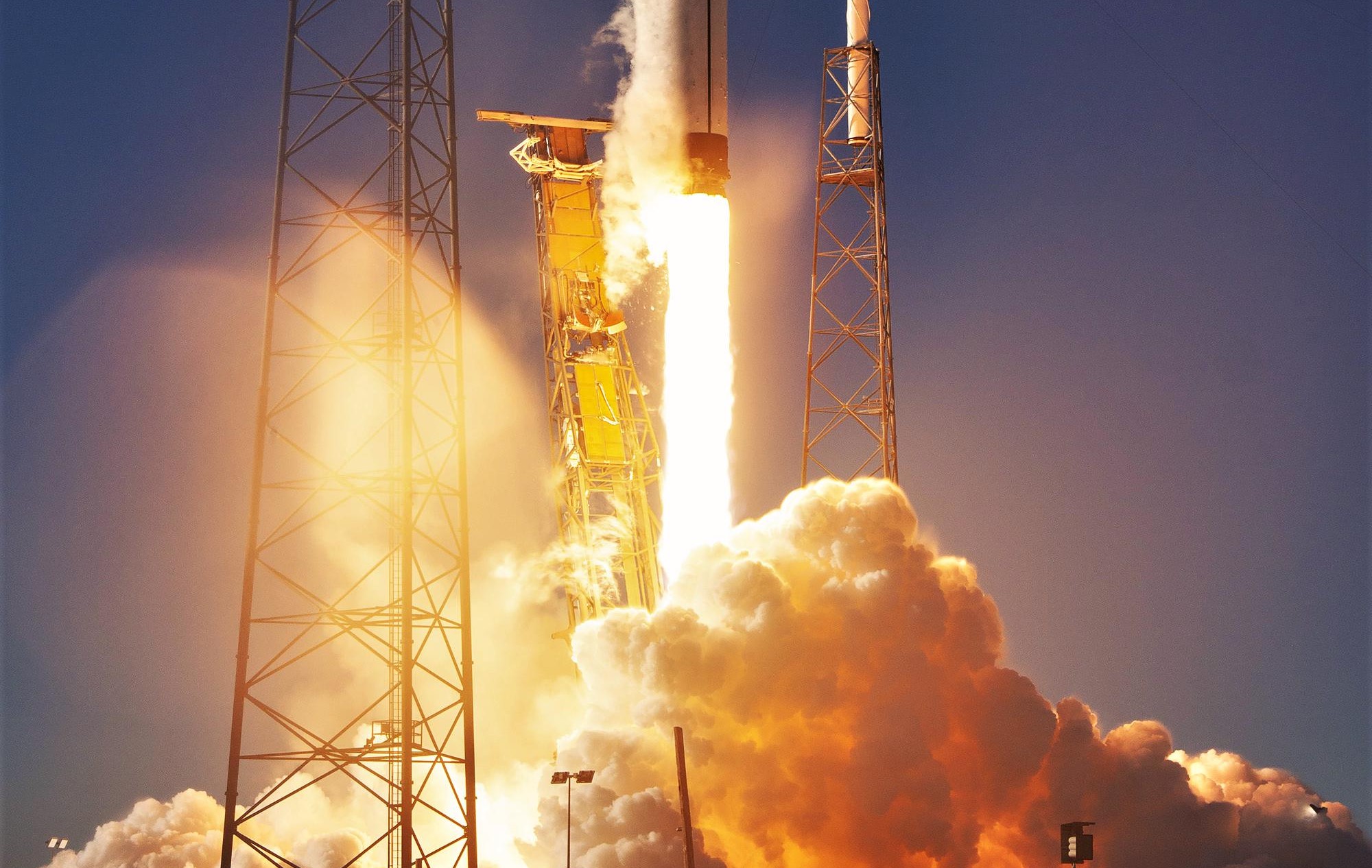
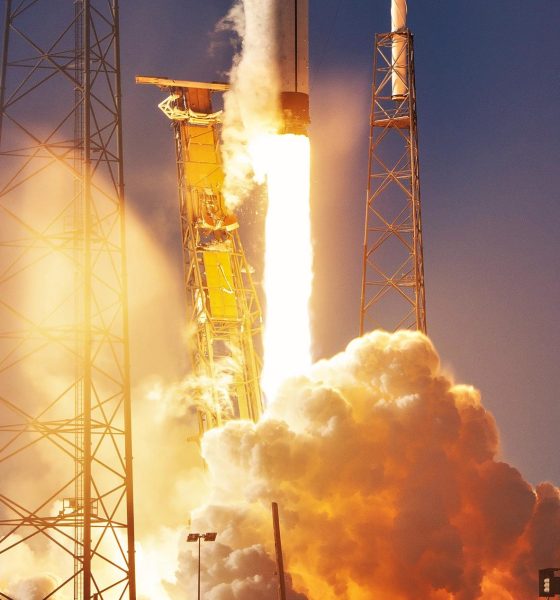
SpaceX
SpaceX calls ULA NASA launch contract “vastly” overpriced in official protest
SpaceX has filed an official protest with the US Government Accountability Office (GAO) after NASA awarded competitor United Launch Alliance a launch contract for Lucy, an interplanetary probe meant to explore a belt of unique asteroids clustered around Jupiter’s orbital swath.
Announced on January 31st, SpaceX believes that NASA made a decision counter to the best interests of the agency and US taxpayers by rewarding ULA the Lucy launch contract at a cost of $148M, a price that the company deemed “vastly more [expensive]” than the bid it submitted for the competition.
Updated our story on SpaceX’s GAO protest of a NASA launch contract with comments from both NASA and ULA. https://t.co/qqCsnNatu0
— Jeff Foust (@jeff_foust) February 14, 2019
With performance roughly equivalent to SpaceX’s Falcon 9 Block 5 rocket in a reusable configuration when launching from low Earth orbit (LEO) up to geostationary transfer orbit (GTO), ULA’s Atlas V 401 variant is the simplest version of the rocket family with the lowest relative performance, featuring no solid rocket boosters. According to the company’s “RocketBuilder” tool, Atlas V 401 was listed with a base price of $109M in 2017. SpaceX’s Falcon 9 is listed with a base price of $62M for a mission with booster recovery, while the rocket’s highest-value expendable launch (for a USAF GPS III satellite worth ~$530 million) was awarded at a cost of $83M, with three subsequent GPS III launch contracts later awarded for ~$97M apiece.
Relative to almost any conceivable near-term launch contract on the horizon, SpaceX’s GPS III launch contracts act as a sort of worst-case price tag for Falcon 9, where the customer requires extraordinary mission assurance and the entire rocket has to be expended during the launch. Put in another way, NASA would likely be able to get the reliability, performance, and mission assurance it wants/needs from Falcon 9 for perhaps $50M less than the cost of ULA’s proposed launch, equivalent to cutting more than a third off the price tag. Part of NASA’s Discovery Program, the Lucy spacecraft will be capped at $450M excluding launch costs, meaning that choosing SpaceX over ULA could singlehandedly cut the mission’s total cost by a minimum of 8-10%.
- A mockup of NASA’s proposed Lucy spacecraft. (NASA)
- NASA’s InSight lifts off atop Atlas V 401, March 2018. (Pauline Acalin)
- A panorama of Atlas V 401, March 2018. (Pauline Acalin)
- SpaceX and NASA’s most recent science spacecraft launch, TESS. (SpaceX)
- After launching in April 2018, B1045 landed on OCISLY and is being refurbished for a second launch in just 5 days, on June 29. (Tom Cross)
“Since SpaceX has started launching missions for NASA, this is the first time the company has challenged one of the agency’s award decisions. SpaceX offered a solution with extraordinarily high confidence of mission success at a price dramatically lower than the award amount, so we believe the decision to pay vastly more to Boeing and Lockheed for the same mission was therefore not in the best interest of the agency or the American taxpayers.” – SpaceX, February 13th, 2019
The fact remains that the Lucy mission does face a uniquely challenging launch trajectory, offering just a single launch window of roughly three weeks, after which the mission as designed effectively becomes impossible. Missing that window could thus end up costing NASA hundreds of millions of dollars in rework and delays, if not triggering the mission’s outright cancellation. NASA and ULA thus couched the launch contract award and ~50% premium in terms of what ULA argues is Atlas V’s “world-leading schedule certainty”. Excluding ULA’s other rocket, Delta IV, Atlas V does have a respectable track record of staying true to its contracted launch targets. However, SpaceX’s Falcon 9 “schedule certainty” continues to improve as the launch vehicle matures.
Admittedly, while Falcon 9 has gotten far better at reliably launching within 5-10 days of its on-pad static fire test, SpaceX has continued to struggle to launch payloads within a week or two of customer targets. Regardless, October 2021 is more than two and a half years away, giving SpaceX an inordinate amount of time and dozens upon dozens of manifested Falcon 9 launches to reach a level of operational maturity and design stability comparable to Atlas V, a rocket that has changed minimally over the course of 16+ years and 79 launches.
- An Atlas V 401 rocket lifts off in 2017. (ULA)
- Falcon 9 B1046 prepares for its third launch and recovery, December 2018. (SpaceX)
- Falcon 9 B1046 is pictured here landing after its third successful launch in December 2018 – the first SpaceX rocket to cross that reusability milestone. (SpaceX)
In October 2010, NASA awarded ULA a contract valued at $187M to launch its MAVEN Mars orbiter on Atlas V 401. In December 2013, ULA won a $163M contract to launch NASA’s InSight Mars lander on Atlas V 401. In January 2019, ULA was awarded a contract for NASA’s Lucy spacecraft, priced at $148.3M for a 2021 Atlas V 401 launch. Put simply, barring ULA using a dartboard and blindfold to determine launch contract pricing or aggressive reverse-inflation, SpaceX’s very existence already stokes the flames of competition, particularly when launch contracts are directly competed by their parent agencies or companies.
Whether or not SpaceX’s protest is entirely warranted or ends up amounting to anything, it can be guaranteed that the fact that SpaceX was there to compete with ULA at all forced the company to slash anywhere from $20-40M from the price it would have otherwise gladly charged NASA. Another ~$50M saved would certainly not be the worst thing to happen to the US taxpayer, but it’s also not the end of the world.
Check out Teslarati’s newsletters for prompt updates, on-the-ground perspectives, and unique glimpses of SpaceX’s rocket launch and recovery processes!

Elon Musk
SpaceX’s next project will produce Starships at a level that sounds impossible
1,000 rockets per year is an insane number, especially considering Starship’s sheer size.
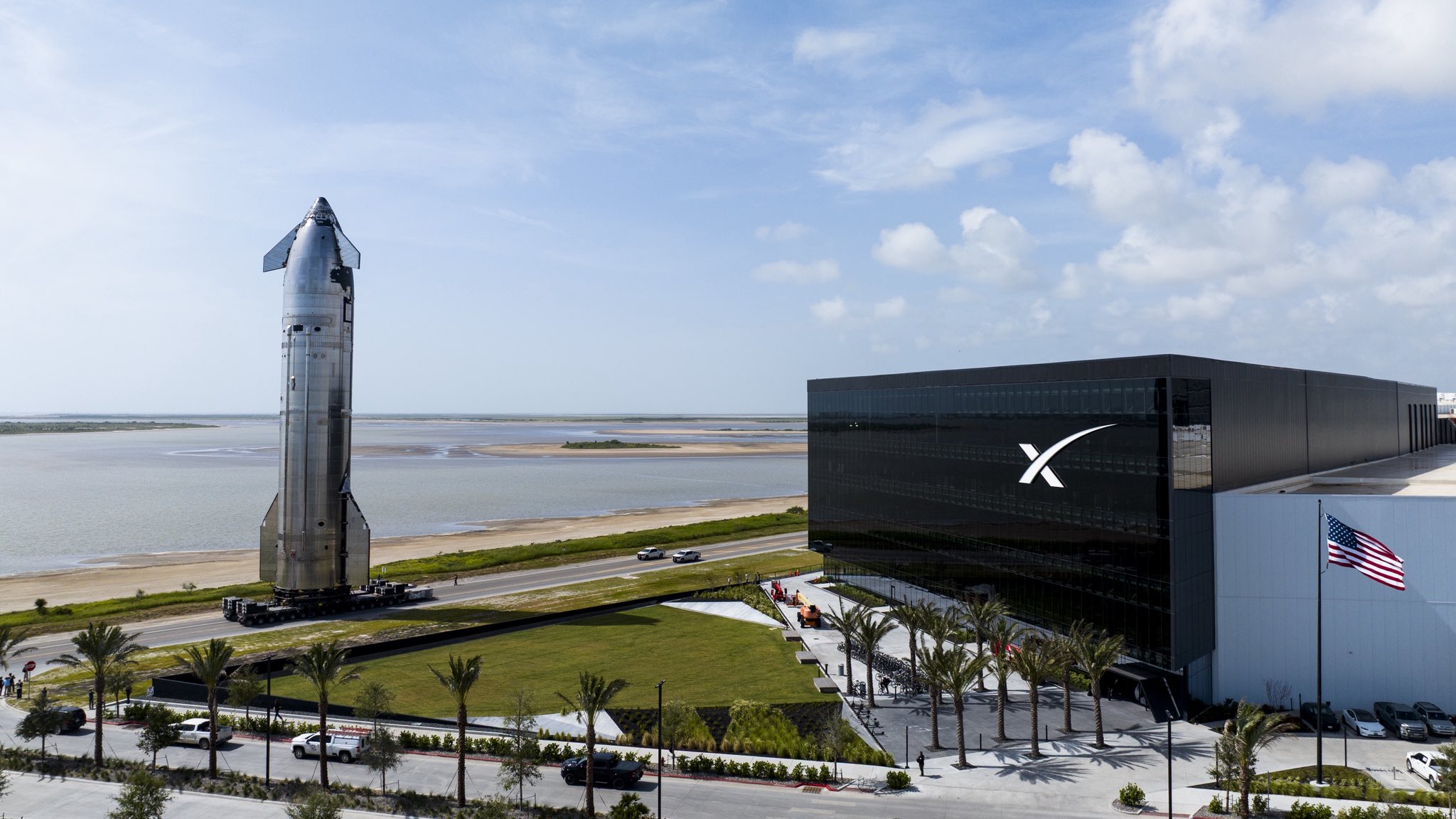
Elon Musk has revealed bold plans for SpaceX’s newest Starbase facility in Texas, predicting it will become a birthplace for “so many spaceships.” The upcoming “Gigabay,” a massive $250 million production hub in Starbase, Texas, is designed to manufacture up to 1,000 Starship rockets per year.
That’s an insane number of rockets for a single facility, especially considering Starship’s sheer size.
One of the world’s largest industrial structures
SpaceX’s Gigabay is expected to stand roughly 380 feet tall and enclose 46.5 million cubic feet of interior space, making it one of the largest industrial structures to date. The facility will feature 24 dedicated work cells for assembling and refurbishing Starship and Super Heavy vehicles, complete with heavy-duty cranes capable of lifting up to 400 U.S. tons, as noted in a Times of India report.
Construction crews have already placed four tower cranes on-site, with completion targeted for December 2026. Once operational, the Gigabay is expected to boost SpaceX’s launch cadence dramatically, as it would be able to build up to 1,000 reusable Starships per year, as noted in a report from the Dallas Express. Musk stated that the Gigabay will be “one of the biggest structures in the world” and hinted that it represents a major leap in Starbase’s evolution from test site to full-scale production hub.
A key step toward Mars and beyond
Starship is SpaceX’s heavy-lift rocket system, and it remains a key part of Elon Musk’s vision of a multiplanetary future. The vehicle can carry 100–150 tonnes to low Earth orbit and up to 250 tonnes in expendable mode. With several successful flights to date, including a perfect 11th test flight, the Starship program continues to refine its reusable launch system ahead of crewed lunar missions under NASA’s Artemis initiative.
Starship is unlike any other spacecraft that has been produced in the past. As per Elon Musk, Starship is a “planet-colonizer” class rocket, as the magnitude of such a task “makes other space transport task trivial.” Considering Starship’s capabilities, it could indeed become the spacecraft that makes a Moon or Mars base feasible.
Cybertruck
Tesla Cybertruck fleet takes over at SpaceX’s Starbase
Interestingly, the Cybertruck uses the same exterior, a stainless steel alloy, as SpaceX rockets. This synergy between the two companies and their very different products shows a very unified mentality between Musk companies.
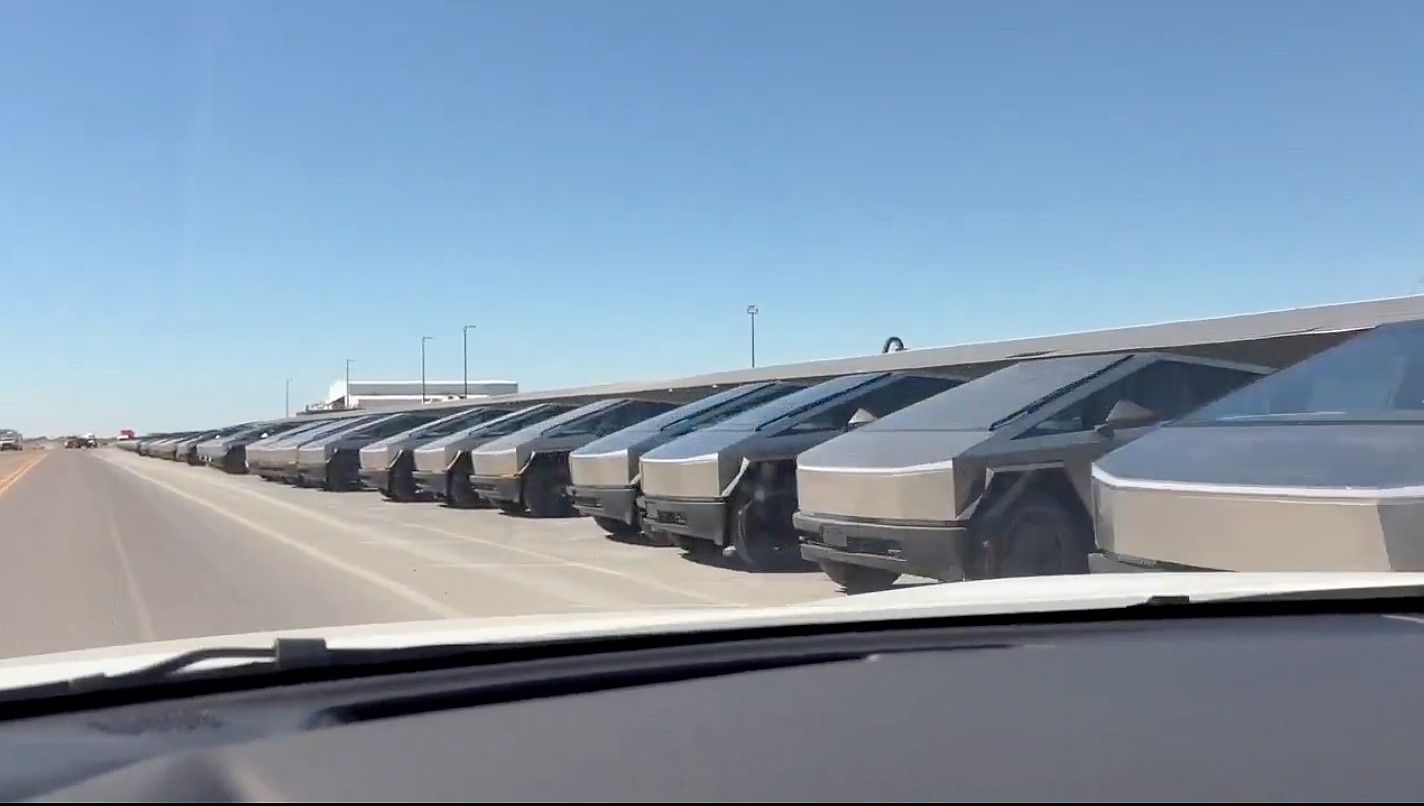
Tesla Cybertrucks have taken over at SpaceX’s Starbase facility in Texas, as hundreds of the all-electric pickup trucks were spotted late last week rounding out a massive fleet of vehicles.
The Cybertruck fleet is geared toward replacing gas vehicles that are used at Starbase for everyday operations. The only surprise about this is that it was not done sooner:
Was just visiting. pic.twitter.com/5Q9wPPaeuH
— Derek Li (@derek1ee) October 31, 2025
Deliveries have been going on for a few weeks, as Cybertrucks have made their way across the state of Texas from Austin to Starbase so they could be included in SpaceX’s fleet of vehicles at the facility.
Interestingly, the Cybertruck uses the same exterior, a stainless steel alloy, as SpaceX rockets. This synergy between the two companies and their very different products shows a very unified mentality between Musk companies.
However, there are some other perspectives to consider as SpaceX is utilizing such a massive fleet of Cybertrucks. Some media outlets (unsurprisingly) are seeing this as a move of weakness by both Tesla and SpaceX, as the aerospace company is, in a sense, “bailing out” lagging sales for the all-electric pickup.
It’s no secret that Tesla has struggled with the Cybertruck this year, and deliveries have been underwhelming in the sense that the company was anticipating between 1 million and 2 million orders for the vehicle before it was widely produced.
A lot of things changed with the Cybertruck between its 2019 unveiling and 2023 initial deliveries, most notably, price.
The price of the Cybertruck swelled significantly and priced out many of those who had pre-ordered it. Some have weighed the option of whether this purchase was a way to get rid of sitting inventory.
However, it seems more logical to consider the fact that SpaceX was likely always going to transition to Teslas for its fleet, especially at Starship, at some point.
It doesn’t seem out of the question that one Musk company would utilize another Musk company’s products, especially considering the Cybertruck has been teased as the vehicle that would be present on Mars.
News
SpaceX successfully launches 100th Starlink mission of 2025
With 100 Starlink missions completed for 2025, space enthusiasts have noted that SpaceX has successfully launched 2,554 Starlink satellites so far this year.
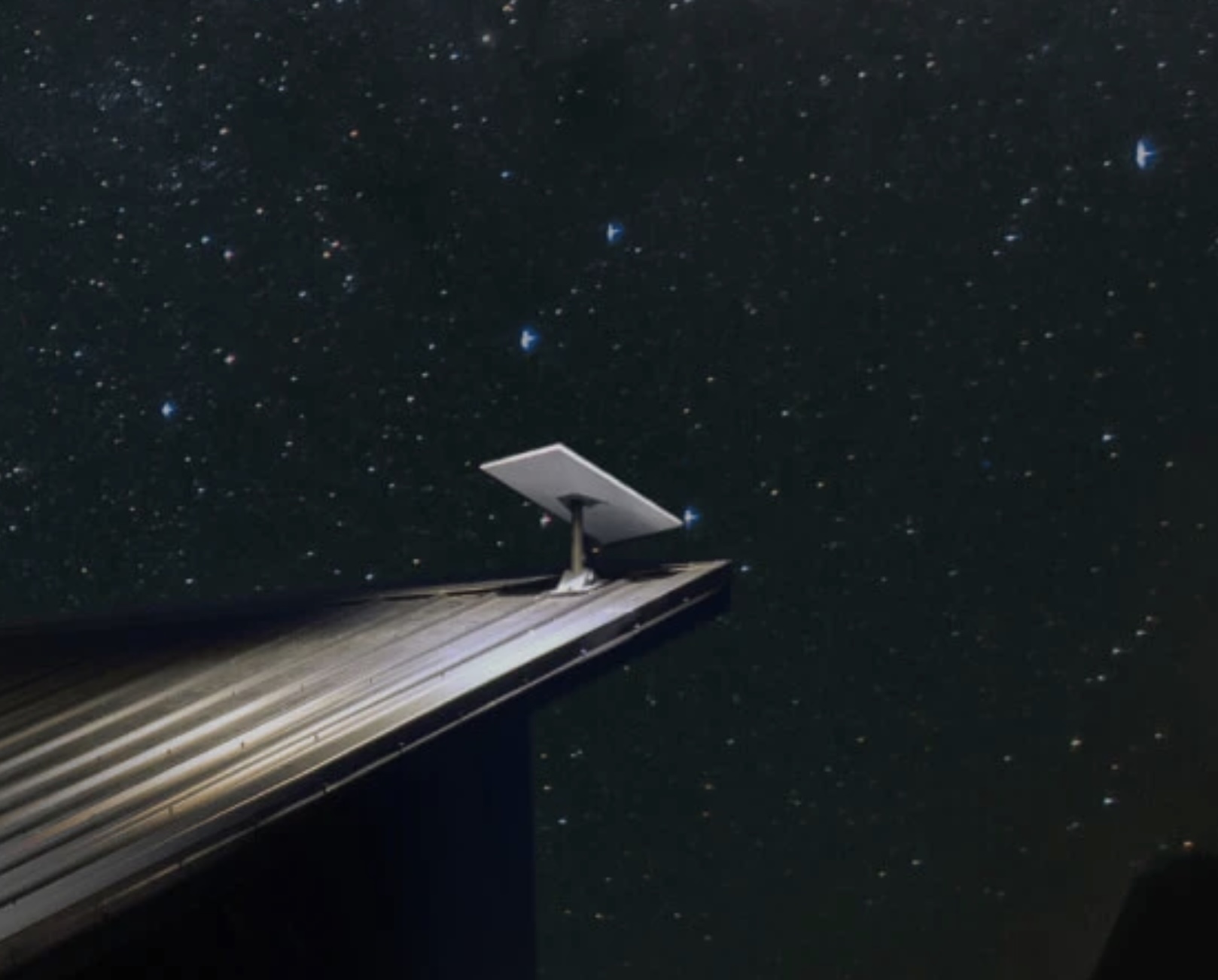
SpaceX achieved its 100th Starlink mission of the year on Friday, October 31, marking another milestone for 2025.
A Falcon 9 rocket carrying 28 Starlink broadband satellites successfully lifted off from Vandenberg Space Force Base in California at 4:41 p.m. ET, carrying another 28 Starlink satellites to Low Earth Orbit (LEO).
Falcon 9 booster’s 29th flight
Roughly 8.5 minutes after liftoff, the Falcon 9’s first stage touched down on the drone ship Of Course I Still Love You in the Pacific Ocean. This marked the booster’s 29th flight, which is approaching SpaceX’s reuse record of 31 missions.
This latest mission adds to SpaceX’s impressive 138 Falcon 9 launches in 2025, 99 of which were dedicated to Starlink, according to Space.com. The company’s focus on reusing boosters has enabled this breakneck pace, with multiple launches each week supporting both Starlink’s expansion and external customers.
Starlink’s network continues massive global expansion
Starlink remains the largest active satellite constellation in history, with more than 10,000 satellites launched, nearly 8,800 of which are currently active. SpaceX recently achieved Starlink’s 10,000-satellite milestone. With 100 Starlink missions completed for 2025, space enthusiasts have noted that SpaceX has successfully launched 2,554 Starlink satellites so far this year.
Starlink, which provides high-speed, low-latency internet connectivity even to the world’s most remote areas, has been proven to be life-changing technology for people across the globe. The service is currently operational in about 150 countries, and it currently has over 5 million subscribers worldwide. From this number, 2.7 million joined over the past year.
